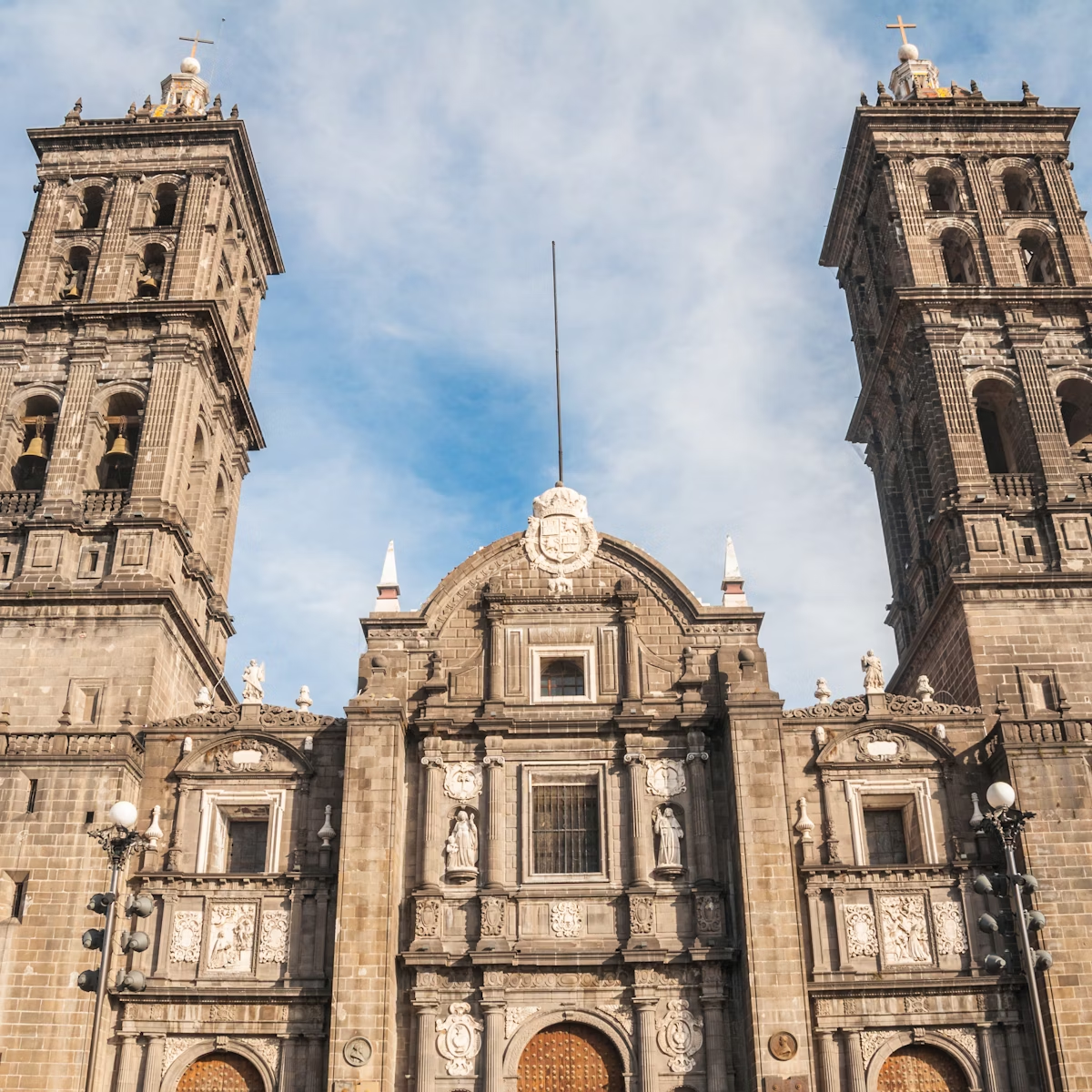The large murals at Cacaxtla are intriguingly on display among the ruins rather than in a museum. They evoke a real sense of history where it happened and are worth seeing before they – unfortunately – continue to fade into history. The main attraction is a natural platform, 200m long and 25m high, called the Gran Basamento (Great Base), now sheltered under an expansive metal roof. Here stood Cacaxtla’s main civic and religious buildings and the residences of its ruling priestly classes.
Starting at the parking lot opposite the site entrance, it’s a 200m walk to the ticket office, museum and restaurant. From the ticket office it’s another 600m downhill to the top of the entry stairs to the Gran Basamento in the Plaza Norte.
From here the path winds clockwise around the ruins until you reach the murals, many of which clearly show Maya influence among the symbols from the Mexican highlands. This combination of styles in a mural is unique to Cacaxtla.
Before reaching the first mural you’ll come to a small patio, of which the main feature is an altar fronted by a small square pit, in which numerous human remains were discovered. Just beyond the altar you’ll find the Templo de Venus, which contains two anthropomorphic sculptures – a man and a woman – in blue, wearing jaguar-skin skirts. The temple’s name is attributed to the appearance of numerous half-stars around the female figure that are associated with Earth’s sister planet, Venus.
On the opposite side of the path, away from the Plaza Norte, the Templo Rojo contains four murals, only one of which is visible. Its vivid imagery is dominated by a row of corn and cacao crops whose husks contain human heads.
Facing the north side of Plaza Norte is the long Mural de la Batalla (Battle Mural), dating from before 700 CE. It shows two warrior groups, one wearing jaguar skins and the other bird feathers, engaged in ferocious battle. The Olmeca-Xicallanca (the jaguar warriors with round shields) are clearly repelling invading Huastecs (the bird warriors with jade ornaments and deformed skulls).
Beyond the Mural de la Batalla, turn left and climb the steps to see the second major mural group, behind a fence to your right. The two main murals (c 750 CE) show a figure in a jaguar costume and a black-painted figure in a bird costume (believed to be the Olmeca-Xicallanca priest-governor) standing atop a plumed serpent.
Cacaxtla is about 20km southwest of Tlaxcala and 32km northwest of Puebla.



